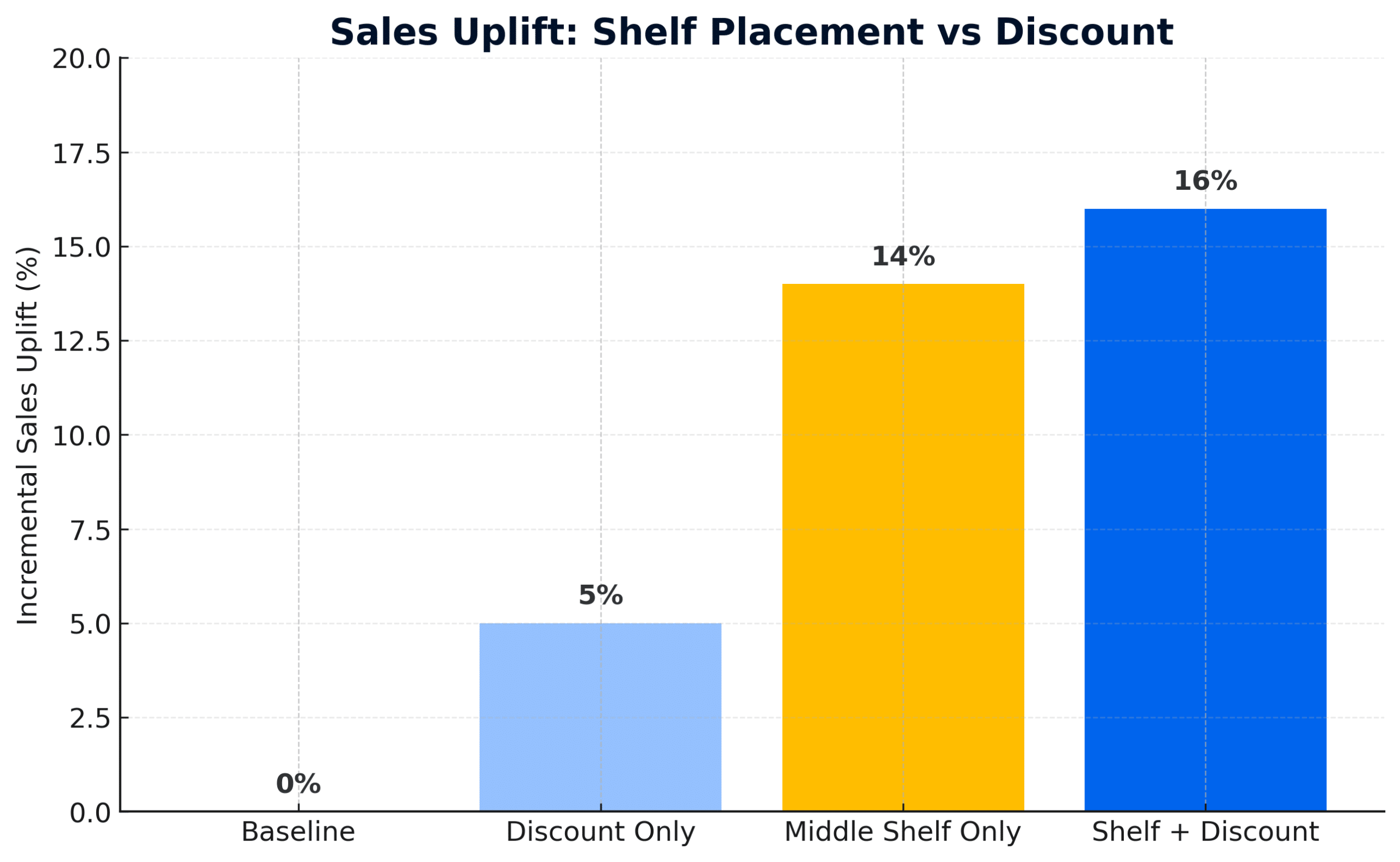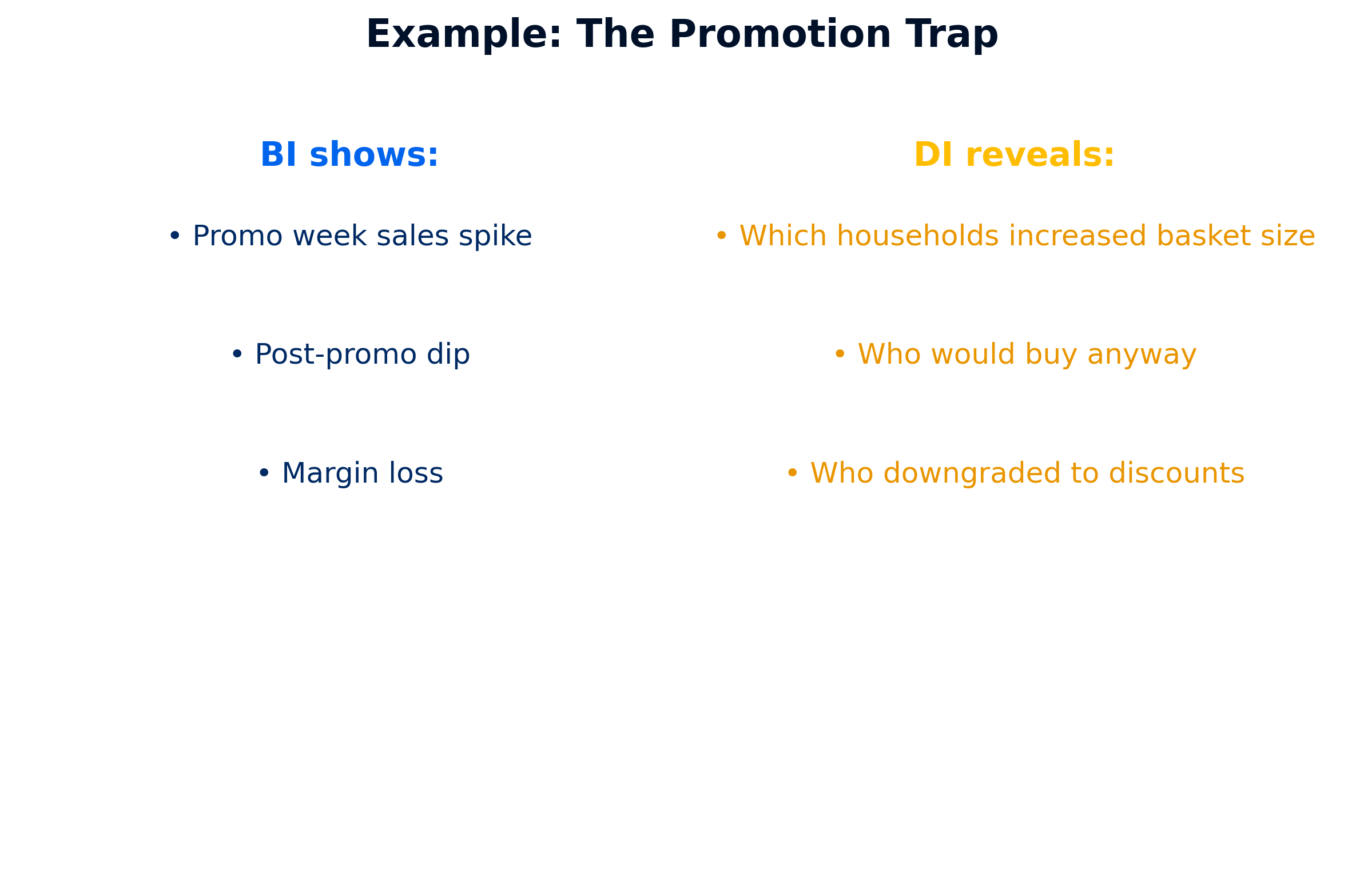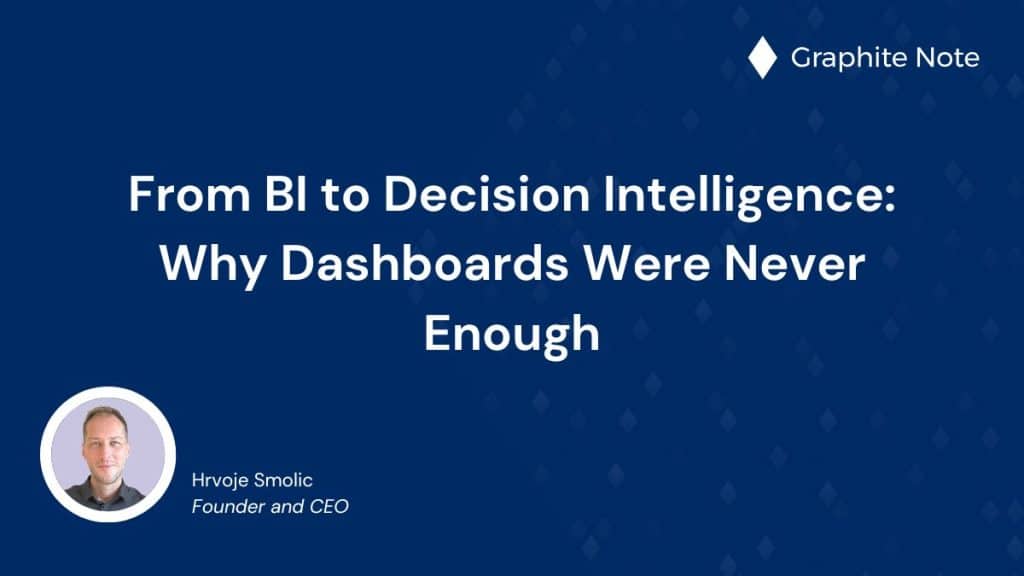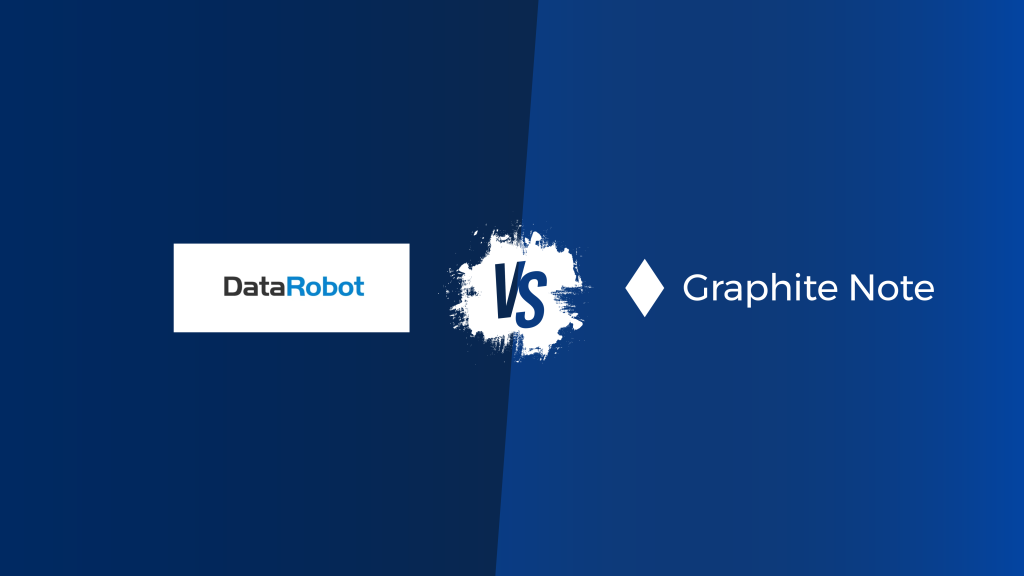Perspective: My journey from descriptive analytics to predictive and causal modeling
I spent years building what everyone called the “data foundation.”
ETL pipelines, data warehouses, dashboards with endless filters. The systems worked. The charts looked sharp. Executives nodded.
It felt like success.
But over time, a realization crept in: we weren’t actually answering the questions that mattered.
The Limits of Business Intelligence
Business Intelligence (BI) is designed to describe what happened. It’s rearview-mirror analysis:
- What were sales last month?
- How many customers churned?
- Which regions underperformed?
These are useful. No business should run without knowing them. But when the real conversations started — in boardrooms, in strategy meetings, in budget reviews — the questions were always different.
“Why did sales drop here?”
“Would this promotion increase profit, or just eat margin?”
“What if we moved product placement instead of cutting price?”
BI couldn’t answer these.
Dashboards show correlations.
They don’t prove causes. They don’t predict outcomes. They don’t prescribe actions.
That’s where Decision Intelligence comes in.
The First Wake-Up Call: The Underperforming SKU
One consumer goods company I worked with launched a new flavor variant. Everyone expected it to perform like the other bestsellers. But three months in, sales lagged badly.
BI could show us:
- Sales volume was 20% below target
- Region C was weakest
- There was no promotion in April
Those insights are fine. They describe the situation. But they don’t point to a way forward.
Decision Intelligence reframes the problem:
- Would moving this SKU to the middle shelf increase sales more than discounting it?
- Which store clusters benefit more from a shelf move versus a promo push?
- If we run both, will we cannibalize other SKUs in the same category?
Suddenly the conversation shifts. Instead of debating what went wrong, the team is testing options for what to do next.
The decision changed: rather than defaulting to a broad 10% discount, the company piloted new shelf placement in a subset of stores. The result? Sales lifted by double digits without giving away margin.
No dashboard could have told them that.

The Second Wake-Up Call: The Price Promotion Trap
Another example came from a familiar tactic: discounting pasta sauce.
BI showed:
- A spike in sales during promo week
- A sharp dip the week after
- Net volume slightly up, margin down
Management cheered the temporary boost, then frowned at the margin impact. The dashboard story ended there.
Decision Intelligence dug deeper:
- Which households genuinely increased their basket size because of the promo?
- Who would have bought anyway?
- Who simply downgraded from premium sauce to discounted sauce?
The model revealed something uncomfortable: most of the volume spike came from customers who switched to the cheaper SKU, not from new or incremental buyers. Profit was being destroyed, not created.
Armed with this, the company redesigned the promotion. They targeted high-income, large households who responded positively to bundle deals. They suppressed promos for discount-sensitive shoppers who only eroded margin.

The Core Difference
Business Intelligence and Decision Intelligence both use data, but they serve different purposes:
Business Intelligence
- Reports what happened
- Tracks KPIs
- Flags drops in sales or conversion
- Answers “what is?”
Decision Intelligence
- Tests what could happen
- Optimizes KPIs
- Explains why sales dropped
- Proves which levers cause change
- Answers “what if?” and “what should we do?”
The difference is subtle when written on paper.
But in practice, it changes how entire companies think.
BI keeps you reactive – DI makes you proactive.
Why Dashboards Were Never the Destination
For years, companies treated BI dashboards as the endgame. The goal was to have a “single source of truth,” to democratize reporting, to give everyone charts they could drill into.
That was progress. But it was also a trap.
Because once everyone had access to dashboards, the next question came fast: “Okay, now what?”
And that’s where BI fell short. Knowing last month’s revenue doesn’t help you decide how to grow next month’s. Knowing churn rose doesn’t tell you what will keep customers from leaving.
We built beautiful dashboards, but strategy still relied on gut feel.
Why This Excites Me
The shift to Decision Intelligence is not about adding fancier charts. It’s about changing the conversation.
Executives stop asking, “What happened?” and start asking:
- Which factor actually caused this outcome?
- If we intervene here, what will the result be?
- Which option creates more profit, not just more volume?
And we can now answer them with confidence, using the same data that was once only feeding dashboards.
That’s the part that excites me most. The value was always there. We just weren’t asking the right questions.
What It Takes
Moving from BI to DI doesn’t mean throwing away dashboards. They’re still useful. But you need more:
- Predictive models to project likely outcomes
- Causal models to separate signal from noise
- Decision frameworks to recommend the next best action
The tools exist. The methods exist. The data already exists inside your systems. The real shift is cultural: stop reporting, start experimenting.
The Benefits
When companies embrace Decision Intelligence, a few things happen quickly:
- Marketing gets smarter. Promos stop being blanket discounts and start being targeted offers that actually grow margin.
- Sales teams get focus. They know which SKUs to push in which stores and why.
- Operations get leaner. Inventory aligns with predicted demand, not guesswork.
- Executives gain confidence. Decisions are justified by evidence, not just intuition.
The ROI is tangible. In one case, the difference between running a blanket promotion and a targeted one was worth millions in annual profit.
Why I Moved Beyond BI
I don’t build dashboards anymore. Not because they’re useless, but because they’re incomplete.
I build models that:
- Predict what’s next
- Explain why it will happen
- Prescribe what to do
That shift changed my career. More importantly, it changed how companies I work with think about data.
They no longer see it as reporting. They see it as strategy.
Conclusion
Dashboards were never the destination. They were the starting point.
The real journey begins when you stop asking “what happened?” and start asking “what will happen, why, and what should we do about it?”
That’s the promise of Decision Intelligence. And it’s why I believe it’s the most exciting evolution in business analytics in decades.
📅 Curious how your data could move beyond dashboards?
Book a demo with Graphite Note:
https://graphite-note.com/book-demo




